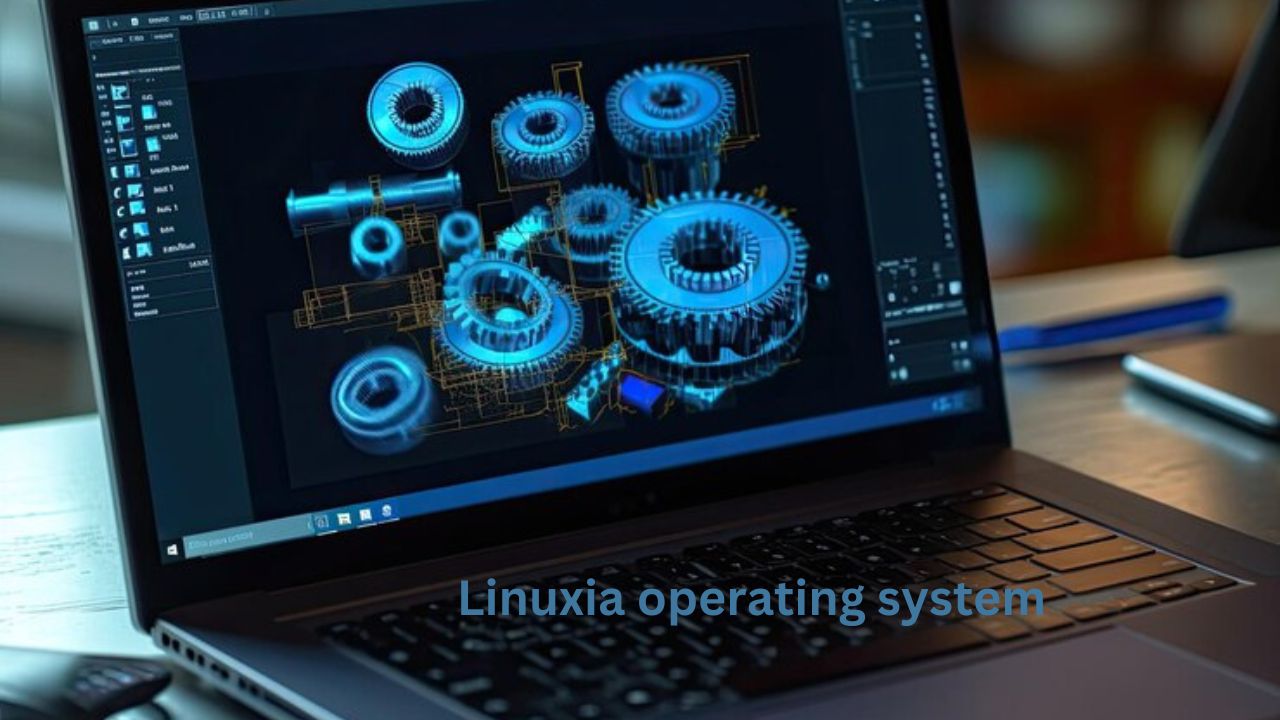Technology
NanaPaint 1.0: Revolutionizing Digital Art Creation

The demand for creative and innovative tools for artists is ever-growing. NanaPaint 1.0 emerges as a game-changer, offering a seamless and intuitive platform for digital art creation.
Introducing NanaPaint 1.0
NanaPaint 1.0 is a cutting-edge digital art software designed to empower artists with a wide range of tools and functionalities. From beginner to professional artists, NanaPaint 1.0 caters to all skill levels, providing a user-friendly interface coupled with powerful features.
Key Features of NanaPaint 1.0
- Intuitive User Interface: NanaPaint 1.0 boasts a sleek and intuitive user interface, making it easy for artists to navigate and access various tools.
- Advanced Brush Customization: With NanaPaint 1.0, artists can customize their brushes to suit their unique style, allowing for a more personalized and expressive art experience.
- Layer Support: NanaPaint 1.0 supports multiple layers, enabling artists to work on different elements of their artwork separately, enhancing efficiency and creativity.
- High-Quality Export: NanaPaint 1.0 allows artists to export their artwork in high quality, ensuring that their creations look stunning across all platforms and devices.
Why Choose NanaPaint 1.0?
NanaPaint 1.0 stands out from other digital art software due to its user-friendly interface, powerful features, and commitment to innovation. Whether you’re a professional artist looking to enhance your workflow or a beginner exploring the world of digital art, NanaPaint 1.0 is the perfect choice.
Support NanaPaint 1.0
If you’re passionate about supporting innovative software development, consider supporting NanaPaint 1.0. Your support will help us continue to improve and innovate, ensuring that artists around the world have access to the best tools for their creative endeavors.
Conclusion
NanaPaint 1.0 is a revolutionary digital art software that is set to redefine the way artists create and express themselves. With its intuitive interface, powerful features, and commitment to innovation, NanaPaint 1.0 is the ultimate tool for artists looking to take their creativity to the next level.
Technology
Why does RS485 need to add a pull-down resistor?

The RS485 bus is a commonly used differential signal transmission method known for its strong anti-interference capabilities, long transmission rs485 distance, and ability to support a large number of nodes. It is widely used in communications, industrial automation, and other fields. However, one common issue in practical applications is whether pull-down resistors need to be added to the A and B lines of the 485 bus and what size these resistors should be. This article will analyze and explain this issue.
How Does the RS485 Bus Work?
First, it’s essential to understand the operating principle and signal characteristics of the RS485 bus. According to the RS485 standard, the 485 bus transmits differential signals through two lines (A and B), with data bits determined by the voltage difference between the two lines.
There are three states for data transmission on the RS485:
- When the voltage difference \( V_{AB} = V_A – V_B \) exceeds +200mV, the RS485 transceiver outputs a logic ‘1’.
- When \( V_{AB} \) is less than -200mV, the output is a logic ‘0’.
- When \( V_{AB} \) is between -200mV and +200mV, the output is uncertain, which means it could be high or low.
How to Avoid Uncertain States?
Normally, we want the receiver to only recognize clear ‘0’ or ‘1’ states. Uncertain states should not occur on the RS485 bus. These uncertain states mainly occur under two conditions:
- When the RS485 bus is idle, all transceivers are in the receive mode, and no transceiver is driving the bus. Consequently, without any source generating a differential voltage, the voltages on lines A and B are essentially equal, resulting in a differential voltage close to zero.
- When the RS485 bus is open, meaning a transceiver is disconnected from the bus. In this case, the disconnected transceiver no longer influences the bus, leading to a nearly zero differential voltage among the remaining transceivers.
An uncertain state occurs when the output from the RS485 drivers is insufficient to create a voltage difference greater than 200mV between lines A and B. This situation means that the state of the bus no longer reflects the state of the drivers, making it impossible for the receivers to recognize the correct signals.
Preventing Uncertain States
To prevent uncertain states and ensure reliable communication, it is necessary to maintain a proper voltage difference even when the bus is idle or a line is disconnected. This can be achieved by adding pull-up resistors to line A and pull-down resistors to line B, ensuring a fixed differential voltage even when the bus is idle or open.
When choosing the value of these resistors, consider the following factors:
- The pull-up and pull-down resistors should be small enough to ensure that the differential voltage during idle or open states exceeds +200mV or is less than -200mV (as required), thus avoiding uncertain states.
- The resistors should be large enough to reduce power consumption and heat, without affecting the driving capacity and output voltage of the RS485 transceivers.
- The resistors should match the input impedance of the RS485 transceivers, termination resistors, bus length, and number of nodes to ensure impedance matching and signal integrity.
Example Calculations
Suppose the internal differential input resistance \( R_{IN} \) is 15kΩ, \( V_{CC} \) is 3.3V, and \( RT \) is 120Ω. Using equal values for \( RU \) and \( RD \), you can calculate that \( R \) should ideally be between 0Ω and 239Ω to ensure that lines A and B are in a ‘data 1’ state under disconnected conditions.
For idle conditions, considering that most node devices add \( RU \) and \( RD \) resistors and terminate with \( RT \), you can derive a formula based on the number of nodes \( m \) with pull resistors and total nodes \( n \). This calculation helps determine the appropriate values for \( RU \) and \( RD \) based on actual node count.
However, the calculated values are ideal. In practice, pull-up and pull-down resistor values are often predetermined inside the nodes. Different node devices may have varying internal resistor values, and you must consider the node count when selecting these resistor values. Additionally, consider the driver chip’s load capacity; avoid setting very low values for pull resistors.
In summary, adding pull-down resistors to the A and B lines of the RS485 bus is essential to maintain a fixed differential voltage during idle or open states, preventing uncertain states that could lead to communication errors or failures. When selecting resistor values, you must consider power consumption, driver capacity, impedance matching, and other factors to ensure stable and reliable communication.
Practical Implementation and Recommendations
When implementing RS485 in your systems, consider the following recommendations to optimize performance and reliability:
- Assess the Environment: Before selecting resistor values, consider the environmental factors where the RS485 bus will operate. Electromagnetic interference, temperature fluctuations, and physical obstructions can all influence the effective transmission characteristics of the bus.
- Choose Appropriate Resistor Values:
- Calculate Resistor Values: Based on the number of nodes and the configuration of your network (terminating resistors at each end, mid-point, etc.), calculate the optimal resistor values to maintain a differential voltage that clearly distinguishes between the logic levels.
- Test Under Different Conditions: It’s advisable to test the bus under various conditions to ensure that the chosen resistors provide stability across all operational scenarios. This may involve adjusting resistor values based on trial and error to find the best fit for your specific application.
- Monitor Bus Performance: Regular monitoring of the RS485 bus performance can help identify potential issues early. Tools like oscilloscopes or bus analyzers can provide real-time feedback on the integrity of the signals being transmitted across the bus.
- Use Quality Components: The quality of the components used in your RS485 setup (such as cables, connectors, and resistors) can significantly affect performance. Opt for high-quality, industry-standard components to ensure reliable data transmission.
- Consider Bus Load and Termination: Ensure that the total load on the bus does not exceed the driving capability of the RS485 transceiver. This includes considering the number of nodes and the impact of any termination resistors added to the system.
- Implement Proper Grounding and Shielding: Proper grounding and shielding are critical in minimizing noise and ensuring the reliability of the RS485 communication link. Ensure that all grounding is done according to industry standards, and use shielded twisted-pair cables where possible.
- Adjust for Long-Distance Communication: For longer distances, consider the potential drop in signal strength and the increase in latency. It may be necessary to adjust the resistor values or even consider using repeaters or amplifiers to maintain signal integrity over longer runs.
By carefully planning and implementing these strategies, you can effectively manage the RS485 bus to avoid uncertain states and ensure reliable communication in various industrial and commercial applications. This approach not only enhances performance but also extends the lifespan of the communication network.
Technology
Unraveling the Mysteries of Linuxia: A Deep Dive into its Features

Step into the fascinating world of Linuxia, a powerful and versatile operating system that has captured the hearts of tech enthusiasts and professionals alike. From its humble beginnings to its current status as a leading player in the digital landscape, Linuxia continues to intrigue and inspire users worldwide. Join us on a deep dive into the mysteries of Linuxia as we explore its key features, dispel common myths, and uncover tips for getting the most out of this innovative platform. Let’s unravel the secrets of Linuxia together!
History and Development of Linuxia
Linuxia traces its roots back to the early 1990s when a Finnish student named Linus Torvalds created the first version of this open-source operating system as a hobby project. What started as a personal endeavor soon gained traction among tech enthusiasts worldwide for its flexibility and customization options.
Over the years, Linuxia has evolved significantly with contributions from developers around the globe. Different distributions, or “distros,” have emerged catering to various user needs, from beginners to advanced users and even specialized applications like gaming or server management.
The collaborative nature of Linuxia’s development has been instrumental in shaping its robust architecture and security features. With each new release, improvements are made to enhance performance, compatibility, and usability across different hardware platforms.
Today, Linuxia stands as a testament to the power of community-driven innovation in the world of technology. Its journey from humble beginnings to becoming a cornerstone in computing showcases the resilience and adaptability that define open-source software projects.
Key Features of Linuxia
Linuxia boasts a plethora of key features that set it apart from other operating systems. One of the standout features is its open-source nature, allowing users to modify and customize the system to suit their needs. This flexibility gives Linuxia a distinct advantage in terms of personalization and control.
Another notable feature is its robust security protocols, making it less susceptible to malware and cyber attacks compared to some mainstream operating systems. In addition, Linuxia offers a wide range of free software applications through its package manager, providing users with access to an extensive library of tools for various tasks.
Furthermore, Linuxia has excellent stability and reliability due to its efficient resource management and strong community support. Its scalability allows it to run on a diverse range of devices, from smartphones to supercomputers, making it a versatile choice for users across different platforms.
Advantages of Using Linuxia
When it comes to using Linuxia, there are several advantages that make it a popular choice among users. One of the key benefits is its open-source nature, allowing for flexibility and customization according to individual preferences. This means users have more control over their operating system compared to proprietary software.
Linuxia also boasts strong security features, making it less susceptible to malware and viruses commonly found in other operating systems. Its robust security measures help protect user data and privacy effectively.
Additionally, Linuxia is known for its stability and reliability, offering a smooth and consistent performance even under heavy workloads. This makes it an ideal choice for both personal use and professional tasks where consistency is crucial.
Moreover, Linuxia supports a wide range of hardware configurations, ensuring compatibility with various devices without the need for additional drivers or software installations. This versatility allows users to seamlessly integrate Linuxia into their existing setup without any hassles.
The advantages of using Linuxia extend beyond just being a free operating system; its customizable nature, enhanced security features, stability, reliability, and broad hardware support make it a compelling option for tech-savvy individuals seeking an efficient computing experience.
Common Misconceptions about Linuxia
One common misconception about Linuxia is that it’s only for tech enthusiasts or experts. While Linuxia does offer advanced customization options, it’s also user-friendly for beginners with its intuitive interfaces and helpful community support.
Another myth is that there are limited software choices on Linuxia compared to other operating systems. In reality, Linuxia has a vast repository of applications available for various needs, including productivity tools, multimedia software, and even gaming options.
Some people believe that Linuxia isn’t secure due to its open-source nature. However, the proactive development community continuously updates security patches and fixes vulnerabilities promptly, making it a robust and secure platform.
Many assume that transitioning to Linuxia requires extensive technical knowledge. With modern distributions offering simple installation processes and user-friendly interfaces, switching to Linuxia can be smooth even for those new to the system.
Understanding these misconceptions can help debunk myths surrounding Linuxia and encourage more users to explore its benefits firsthand.
How to Install and Use Linuxia
Installing and using Linuxia may seem daunting at first, but it’s actually quite straightforward. To get started, you’ll need to download the Linuxia distribution that best suits your needs from their official website or a trusted source. Once downloaded, create a bootable USB drive using software like Rufus or Etcher.
Next, insert the USB drive into your computer and restart it to boot from the USB. Follow the on-screen instructions to install Linuxia onto your system. During installation, you can choose to dual-boot with another operating system or replace it entirely.
After successful installation, familiarize yourself with the Linuxia desktop environment. Customization options are plentiful – tweak settings, install themes, and add widgets to make it truly yours. Explore the pre-installed applications like LibreOffice for productivity and GIMP for image editing.
Don’t be afraid to explore the terminal – this powerful tool allows for precise control over your system. Take advantage of online resources and forums for troubleshooting tips and support as you navigate through your Linuxia journey!
Popular Applications and Tools on Linuxia
Are you ready to explore the wide array of popular applications and tools available on Linuxia? From productivity software like LibreOffice for word processing and spreadsheets to media players such as VLC for all your entertainment needs, Linuxia has it all.
For developers, tools like Git and Docker are indispensable for version control and containerization projects. Graphic designers can unleash their creativity using GIMP or Inkscape while music enthusiasts can mix tracks with Audacity.
If you’re into coding, IDEs like Visual Studio Code or IntelliJ IDEA offer powerful features tailored to streamline your development process. And let’s not forget about browsing the web securely with Firefox or managing emails efficiently with Thunderbird.
The open-source nature of Linuxia fosters a vibrant ecosystem where new applications are constantly being developed to cater to diverse user needs. So dive in and discover the endless possibilities that await you on this versatile operating system!
Troubleshooting Tips for Beginners
Encountering issues while navigating through the Linuxia system is a common occurrence for beginners. But fret not, as there are some handy troubleshooting tips to help you sail through these bumps smoothly.
If you encounter an error message or a malfunctioning application, don’t panic. Take a deep breath and try to understand the specific issue at hand. It could be related to compatibility, configuration settings, or even user permissions.
One effective strategy is to search online forums and communities dedicated to Linuxia users. Many experienced individuals are willing to lend a helping hand and provide guidance on resolving technical hiccups.
Additionally, familiarize yourself with the terminal commands that can assist in diagnosing problems and executing fixes efficiently. The command line interface might seem intimidating at first but mastering its basics can be immensely beneficial in troubleshooting issues swiftly.
Always remember that practice makes perfect when it comes to troubleshooting on Linuxia. Don’t shy away from experimenting and learning from your mistakes – it’s all part of the journey towards becoming proficient in navigating this versatile operating system.
Future Developments for Linuxia
As the world of technology continues to evolve at a rapid pace, the future of Linuxia holds promising advancements in store. Developers are constantly working on enhancing user experience and expanding compatibility with a wide range of devices.
One key focus for the future development of Linuxia is improving its graphical interface to make it even more intuitive and visually appealing for users. This will attract a broader audience and simplify navigation within the operating system.
Additionally, there is an ongoing effort to optimize performance and speed up processes within Linuxia, ensuring that it remains competitive with other operating systems in terms of efficiency and responsiveness.
Another area of development includes further integration with cloud services, enabling seamless connectivity and data synchronization across various platforms. This will enhance productivity and convenience for users who rely on cloud storage for their files.
The future holds exciting possibilities for Linuxia as developers continue to innovate and adapt to meet the changing needs of tech-savvy users worldwide.
Conclusion
Linuxia stands out as a powerful and versatile operating system that offers numerous advantages to its users. With its rich history, robust features, and growing community support, Linuxia continues to evolve and adapt to the changing technological landscape.
As you embark on your journey into the world of Linuxia, remember that it may present some initial challenges for beginners. However, with patience and dedication, you can master this open-source platform and unlock its full potential.
Whether you are a developer looking for customization options or a casual user seeking a secure and reliable system, Linuxia has something to offer everyone. By exploring popular applications, learning troubleshooting tips, and staying updated on future developments in the Linuxia ecosystem, you can make the most of this dynamic operating system.
So dive into the mysteries of Linuxia with confidence and curiosity. Embrace its unique features, unleash your creativity, and discover how this open-source gem can enhance your computing experience. Happy exploring!
Technology
Data Analytics and Decision-Making in Construction Industries

In the busy globe of building and construction where tasks are usually complicated and expensive, plus time-sensitive making educated choices is critical. From task preparation plus style to procurement, building and construction, and upkeep every phase of the building lifecycle entails numerous choices that can influence expense, timetable, high quality as well as security. Over the last few years, the development of information analytics has changed the method of building business technique decision-making offering important understandings stemming from large quantities of information. In this blog site, we’ll discover the duty of information analytics in the building and construction sector plus just how it allows investors to make smarter, much more tactical choices to drive task success.
The Rise of Data Analytics in Construction
The building and budget estimating services sector has typically been defined by its dependence on hands-on procedures, fragmented details as well as minimal data-driven understandings. Nonetheless, the expansion of electronic innovations, the Internet of Things (IoT), and also Building Information Modeling (BIM) have caused a surge of information created throughout the building lifecycle. This information includes a wide variety of resources consisting of job strategies, routines, spending plans, sensing unit analyses, devices telecommunications plus ecological variables. Information analytics refers to the procedure of evaluating this information to discover patterns, patterns coupled with combinations that can notify decision-making as well as drive much better results.
Maximizing Project Planning & Design
Among the crucial locations where information analytics is making a considerable influence remains in job preparation together with style. By leveraging historic job information, consisting of price quotes, timetables, plus efficiency metrics, building businesses can determine patterns as well as standards to notify the preparation procedure. Advanced analytics methods such as anticipating modeling as well as simulation make it possible for investors to anticipate task results, analyze threats, and also enhance source appropriation. Furthermore, BIM-enabled information analytics helps with collective layout procedures, enabling designers, designers, together with professionals to picture as well as assess structure efficiency criteria such as power effectiveness, architectural stability coupled with passenger convenience.
Improving Supply Chain Management
Reliable supply chain administration is important to the success of building and electrical estimate tasks making certain that products, tools, and labor are purchased as well as supplied promptly and within budget plan. Information analytics plays an essential duty in maximizing the supply chain by supplying exposure right into stock degrees, distributor efficiency, lead times plus market characteristics. By examining historic purchase information along with market patterns, building businesses can recognize possibilities to enhance procedures, bargain beneficial agreements, and reduce supply chain dangers. Real-time analytics control panels allow investors to keep track of supply chain KPIs coupled with making data-driven choices to resolve disruptions and also hold-ups proactively.
Boosting Construction Operations
On the building and lumber takeoff services website, information analytics encourages task supervisors and managers to keep track of progression, track performance, and recognize inadequacies in real-time. IoT sensing units installed in tools, devices plus equipment accumulate information on use, efficiency along upkeep demands allowing anticipating upkeep and also enhancing device application. Additionally, wearable gadgets geared up with sensing units and also GPS monitoring allow the tracking of employee wellness as well as security, making sure conformity with laws plus alleviating threats of mishaps coupled with injuries. By evaluating this information, building companies can determine patterns, patterns, plus locations for enhancement to boost functional effectiveness along with efficiency.
Anticipating Maintenance & Asset Management
Along with maximizing building and construction procedures, information analytics makes it possible for aggressive upkeep as well as administration of facilities’ properties throughout their lifecycle. By gathering and also evaluating information from sensing units as well as tracking systems installed in structures as well as facilities building and construction firms can forecast combined with protection against device failings, lower downtime, together with expanding possession life-span. Anticipating upkeep formulas assess tools’ efficiency information to recognize very early indications of prospective concerns making it possible for upkeep groups to take rehabilitative activity before failings happen. Additionally, possession monitoring systems take advantage of information analytics to maximize funding financial investments, focus on upkeep tasks, and take full advantage of the worth of framework properties with time.
Driving Continuous Improvement
In past specific jobs, information analytics allows building businesses to drive constant enhancement throughout their procedures with data-driven decision-making. By accumulating and also examining efficiency information from numerous jobs businesses can recognize ideal techniques, systematize procedures along apply lessons found coupled with improved effectiveness plus top quality. Advanced analytics methods such as artificial intelligence and also expert systems (AI) make it possible for the recognition of patterns coupled with connections in huge datasets, discovering understandings that can notify tactical decision-making along with advancement. By promoting a society of data-driven decision-making, building businesses can adjust to altering market characteristics, alleviate dangers as well as maximize possibilities for development plus distinction.
Final Thought
In a significantly affordable and also intricate building sector, information analytics has become an effective device for driving educated decision-making as well as accomplishing task success. By utilizing the wide range of information created throughout the building lifecycle partners can get useful understandings right into job efficiency, supply chain characteristics, functional performance, and also property administration. From maximizing job preparation and style to boosting supply chain administration, building and construction procedures, and property upkeep information analytics allows businesses to recognize chances, reduce dangers plus drive continual enhancement. As information analytics continues to develop, building and construction firms that welcome an information-driven method will certainly obtain an affordable benefit supplying tasks much more effectively, lasting as well as productively in the electronic age.
-

 Fashion2 months ago
Fashion2 months agoAll about Denim (λιβαισ) Fashion.
-

 News3 months ago
News3 months agoAbraham Quiros Villalba: A Profile of Brilliant Leader
-

 Health3 months ago
Health3 months agoMilialar (Milia): Everything You Need to Know
-

 Detective2 months ago
Detective2 months agodetective conan الحلقه 509
-

 Technology3 months ago
Technology3 months ago2023-1954: More Than a Technology
-

 Health3 months ago
Health3 months agoToastul : 7 Recipes to Savor Morning, Noon, and Night
-

 Technology2 months ago
Technology2 months agoWadware : 7 Signs Your Device Might Be Infected
-

 Technology3 months ago
Technology3 months agoA Journey to Discover Lan Astron
